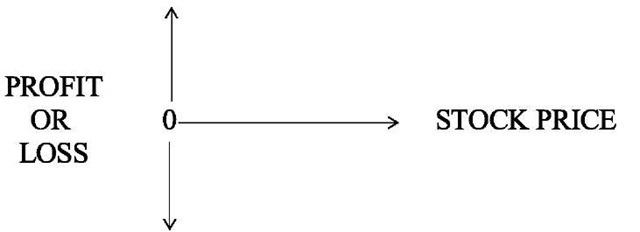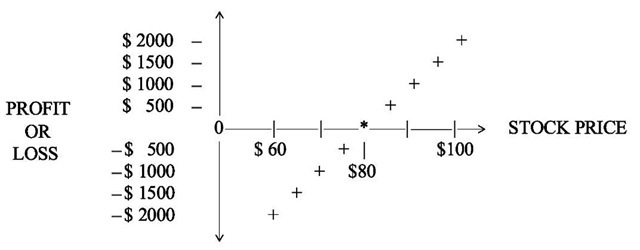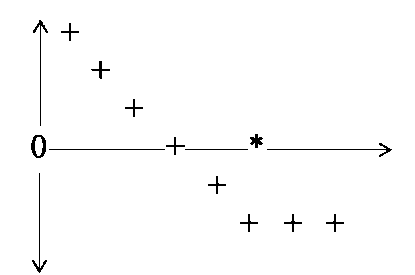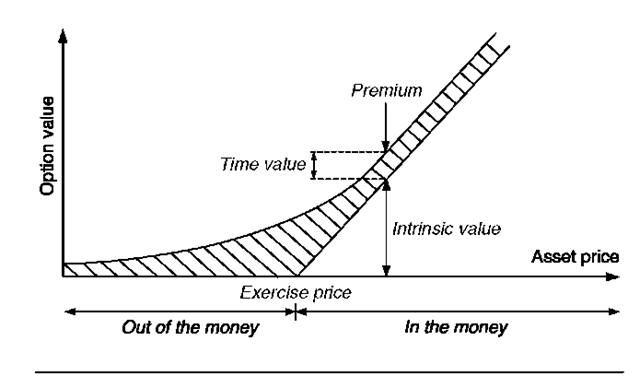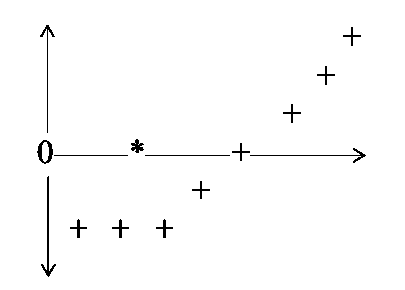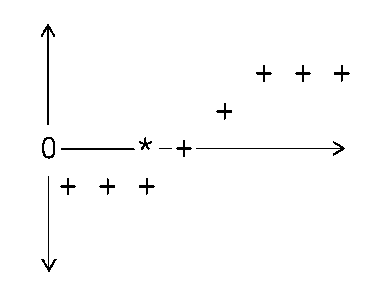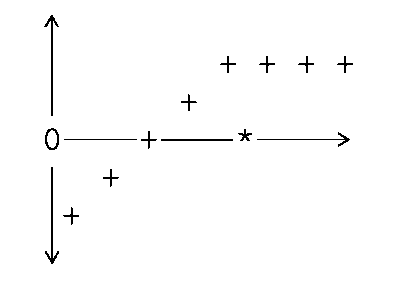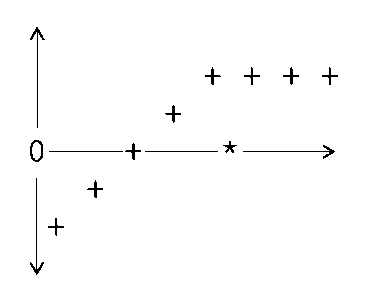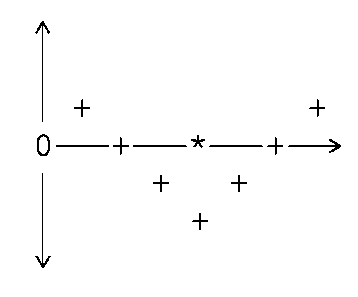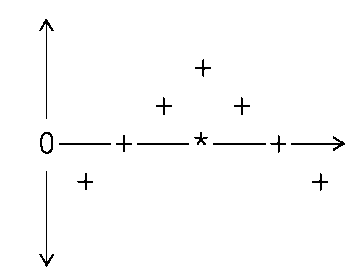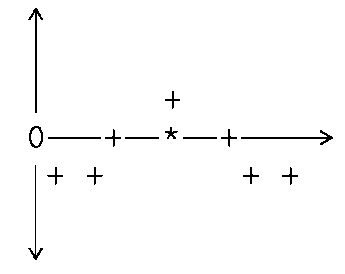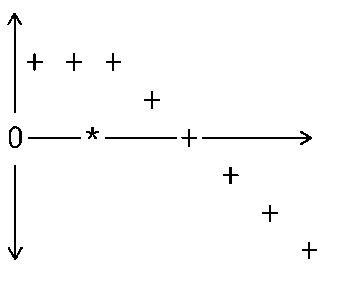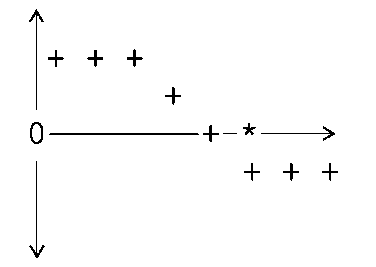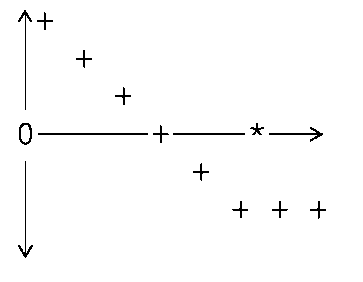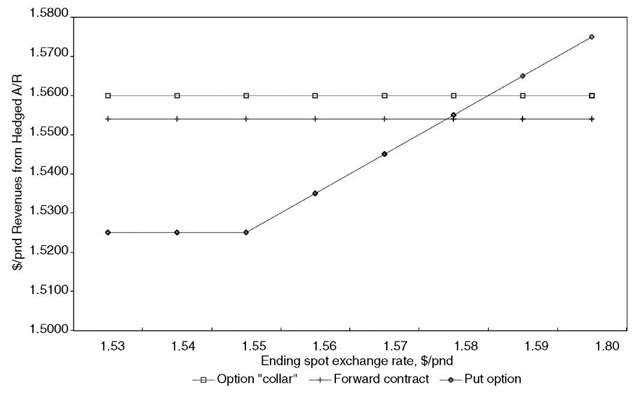OFFER
Also called ask or sell, the rate at which a trader is willing to sell a foreign currency or other securities.
OFFICIAL RESERVE TRANSACTIONS BALANCE
The official reserve transaction balance shows an adjustment to be made in official reserves for the balance of payments to balance.
OFFICIAL SETTLEMENTS BALANCE
Also called overall balance or net liquidity balance, the official settlements balance is the bottom line balance of payments when all private sector transactions have been accounted for and all that remain are official exchanges between central banks (and the IMF). It is equal to changes in short-term capital held by foreign monetary agencies and official reserve asset transactions. This balance is a comprehensive balance often used to judge a nation’s overall competitive position in terms of all private transactions with the rest of the world. Exhibit 83 summarizes this and other commonly used balance of payments measures.
EXHIBIT 83
Commonly Used Balance of Payments Measures
| Group | Category Component | Popular Name |
| A | Merchandise Trade | |
| Other Current Items | ||
| Current Account | Current Balance (A) | |
| B | Direct Investment | |
| Portfolio Investment | ||
| Other Long-Term Items | ||
| Long-Term Capital | Basic Balance (A + B) | |
| C | Short-Term Capital | |
| D | Errors and Omissions | Official Settlements Account |
| (A + B + C + D) |
OFFSHORE BANKING
Offshore banking means accepting deposits and making loans in foreign currency, i.e., the Eurocurrency market, although the activity is not limited to Europe. The terms offshore, overseas, and foreign are frequently used interchangeably.
OFFSHORE MUTUAL FUND
A mutual fund that is managed and resides out of a foreign country, usually outside the U.S.
OLD ECONOMY VERSUS NEW ECONOMY
The new economy is the new, digital economy driven by industrial information technology, much of which is related to telecommunications such as the Internet—a technology that, many argue, has a huge potential to transform the engineering industry. In the new economy, production and distribution systems are automated, computer-based systems. The old economy, classical or traditional, is undergoing sweeping changes through the speed and efficiency brought by applications of information technology and the Internet.
OPEN INTEREST
Total number of futures or options on futures contracts that have not yet been offset or fulfilled by delivery. An indicator of the depth or liquidity of a market (the ability to buy or sell at or near a given price) and of the use of a market for risk- and/or asset-management.
OPPORTUNITY COST
1. The difference between the forward rate and the (eventual) future spot rate. The forward contract does fix a “minimum loss” for the firm by setting the guaranteed price of exchange in the future.
EXAMPLE 83
Suppose that the 3-month forward rate for the French franc is $0.1457 per FFr. However, if the French franc devalues over the next three months to, say $0.1357/FFr, the forward contract holder will have an opportunity cost of the difference between the forward rate and the (eventual) future spot rate (a difference of $0.01/FFr, or 6.4%).
2. Net benefit lost by rejecting some alternative course of action. Its significance in decision making is that the best decision is always sought, as it considers the cost of the best available alternative not taken. The opportunity cost does not appear on formal accounting records.
EXAMPLE 84
If $1 million can be invested in a Euro-commercial paper (Euro-P or EUP) earning 9%, the opportunity cost of using that money for a particular business venture would be computed to be $90,000 ($1 million x .09).
OPTIMUM CURRENCY AREA
The optimum currency area is the best area within which exchange rates are fixed and between which exchange rates are flexible. It is the region characterized by relatively inexpensive mobility of the factors of production (capital and labor).
OPTION
An option is a contract to give the investor the right—but not the obligation—to buy or sell something. It has three main features. It allows you, as an investor to “lock in”: (1) a specified number of shares of stock, (2) at a fixed price per share, called strike or exercise price, (3) for a limited length of time. For example, if you have purchased an option on a stock, you have the right to “exercise” the option at any time during the life of the option. This means that, regardless of the current market price of the stock, you have the right to buy or sell a specified number of shares of the stock at the strike price (rather than the current market price). Options possess their own inherent value and are traded in secondary markets. You may want to acquire an option so that you can take advantage of an expected rise in the price of the underlying stock. Option prices are directly related to the prices of the common stock to which they apply. Investing in options is very risky and requires specialized knowledge. Options may be American style (i.e., they can be exercised at any time up to the expiration date) or European style (i.e., exercisable only at maturity). Almost all exchange traded options are American style; over-the-counter may be either American or European style, but are often European.
All options are divided into two broad categories: calls and puts. A call option gives you the right (but not the obligation) to buy:
1. 100 shares of a specific stock,
2. at a fixed price per share, called the strike or exercise price,
3. for up to 9 months, depending on the expiration date of the option.
When you purchase a call, you are buying the right to purchase stock at a set price. You expect price appreciation to occur. You can make a sizable gain from a minimal investment, but you may lose all your money if the stock price does not go up.
EXAMPLE 85
You purchase a 3-month call option on Dow Chemical stock for $4 1/2 at an exercise price of $50 when the stock price is $53.
On the other hand, a put option gives you the right to sell (and thus force someone else to buy):
1. 100 shares of a specific stock,
2. at a fixed price, the strike price,
3. for up to 9 months, depending on the expiration date of the option.
Purchasing a put gives you the right to sell stock at a set price. You buy a put if you expect a stock price to fall. You have the chance to earn a considerable gain from a minimal investment, but you lose the whole investment if price depreciation does not materialize. The buyer of the contract (called the holder) pays the seller (called the writer) a premium for the contract. In return for the premium, the buyer obtains the right to buy securities from the writer or sell securities to the writer at a fixed price over a stated period of time.
| Call Option | Put Option | |
| Buy | The right to call (buy) from | The right to put (sell) to the |
| (long) | the writer | writer |
| Sell | Known as writing a call, | Known as writing a put, if the |
| (short) | being obligated to sell if | stock or contract is put |
| called |
Calls and puts are typically for widely held and actively traded securities on organized exchanges. With calls there are no voting privileges, ownership interest, or dividend income. However, option contracts are adjusted for stock splits and stock dividends.
Calls and puts are not issued by the company with the common stock but rather by option makers or option writers. The maker of the option receives the price paid for the call or put minus commission costs. The option trades on the open market. Calls and puts are written and can be acquired through brokers and dealers. The writer is required to purchase or deliver the stock when requested.
Holders of calls and puts do not have to exercise them to earn a return. They can trade them in the secondary market for whatever their value is. The value of a call increases as the underlying common stock goes up in price. The call can be sold on the market before its expiration date.
A. More on the Terms of an Option
There are three key terms with which you need to be familiar in connection with options: the exercise or strike price, expiration date, and option premium. The exercise price for a call is the price per share for 100 shares, at which you may buy. For a put, it is the price at which the stock may be sold. The purchase or sale of the stock is to the writer of the option. The striking price is set for the life of the option on the options exchange. When stock price changes, new exercise prices are introduced for trading purposes reflecting the new value.
In case of conventional calls, restrictions do not exist on what the striking price should be. However, it is usually close to the market price of the stock to which it relates. But in the case of listed calls, stocks having a price lower than $50 a share must have striking prices in $5 increments. Stocks between $50 and $100 must have striking prices in $20 increments. Striking prices are adjusted for material stock splits and stock dividends.
The expiration date of an option is the last day it can be exercised. For conventional options, the expiration date can be any business day; for a listed option there is a standardized expiration date.
The cost of an option is referred to as a premium. It is the price the buyer of the call or put has to pay the seller (writer). In other words, the option premium is what an option costs to you as a buyer. Note: With other securities, the premium is the excess of the purchase price over a determined theoretical value.
B. Why Do Investors Use Options?
Why use options? Reasons can vary from the conservative to the speculative. The most common reasons are:
1. You can earn large profits with leverage, that is, without having to tie up a lot of your own money. The leverage you can have with options typically runs 20:1 (each investor dollar controls the profit on twenty dollars of stock) as contrasted with the 2:1 leverage with stocks bought on margin or the 1:1 leverage with stocks bought outright with cash. Note: Leverage is a two-edge sword. You can lose a lot, too. That is why it is a risky derivative instrument.
2. Options may be purchased as “insurance or hedge” against large price drops in underlying stocks already held by the investor.
3. If you are neutral or slightly bullish in the short term on stocks you own, you can sell (or write) options on those stocks and realize extra profit.
4. Options offer a range of strategies that cannot be obtained with stocks. Thus, options are a flexible and complementary investment vehicle to stocks and bonds.
C. How Do You Trade Options?
Options are traded on listed option exchanges (secondary markets) such as the Chicago Board
Options Exchange, American Stock Exchange, Philadelphia Stock Exchange, and Pacific Stock Exchange. They may also be exchanged in the over-the counter (OTC) market. Option exchanges are only for buying and selling call and put options. Listed options are traded on organized exchanges. Conventional options are traded in the OTC market. The Options Clearing Corporation (OCC) acts as principal in every options transaction for listed options contracts. As principal it issues all listed options, guarantees the contracts, and is the legal entity on the other side of every transaction. Orders are placed with this corporation, which then issues the calls or closes the position. Because certificates are not issued for options, a brokerage account is required. When an investor exercises a call, he goes through the Clearing Corporation, which randomly selects a writer from a member list. A call writer is obligated to sell 100 shares at the exercise price. Exchanges permit general orders (i.e., limit) and orders applicable only to the option (i.e., spread order).
D. How Do You Use Profit Diagrams?
In order to understand the risks and rewards associated with various option strategies, it is very helpful to understand how the profit diagram works. In fact, this is essential for understanding how an option works. The profit diagram is a visual portrayal of your profit in relation to the price of a stock at a single point in time.
EXAMPLE 86
| Nokia Stock Price in | Profit |
| 3 months | (Loss) |
| $60 | -$2000 |
| $70 | -$1000 |
| $80 | 0 |
| $90 | $1000 |
| $100 | $2000 |
The following shows the profit diagram for 100 shares of Nokia stock if you bought them today at $80 per share and sold them in 3 months. (Commissions are ignored in this example.)
Note that all stocks have the same shape on the profit diagram at any point in the future. You will later see that this is not the case with options.
EXAMPLE 87
Assume that on April 7, you become convinced that Nokia stock which is trading at $80 a share will move considerably higher in the next few months. So, you buy one call option on Nokia stock with a premium of $2 a share. Since the call option involves a block of 100 shares of stock, it costs you a total of $2 times 100 shares or $200. Assume further that this call option has a striking price of $85 and an expiration date near the end of September. What this means is that for $200 you have the right to buy:
1. 100 shares of Nokia stock
2. at $85 a share
3. until near the end of September.
This may not sound like you are getting much for $200, but if Nokia stock goes up to $95 a share by the end of September, you would have the right to purchase 100 shares of Nokia stock for $8500 ($85 times 100 shares) and to turn right around and sell them for $9500, keeping the difference of $1000, an $800 profit. That works out to 400% profit in less than five months.
However, if you are wrong and Nokia stock goes down in price, the most you could lose would be the price of the option, $200. The following displays the profit table for this example.
| If the Nokia Stock Price | The Value of the Call | And Your Profit |
| in Sep Turns Out to be: | Option would be: | could be: |
| $75 | ^ $0 | ^ – $200 |
| $80 | $0 | - $200 |
| $85 | $0 | - $200 |
| $87 | $200 | $0 |
| $90 | $500 | $300 |
| $95 | $1000 | $800 |
The profit diagram will look like this:
You are “long 1 Nokia Sep 85 call” option.
Notice where the profit line bends—at $85, unlike stocks that have the same shape on the profit diagram at any point in the future. This is not the case with options. You start making money after the price of Nokia stock goes higher than the $85 striking price of the call option. When this happens, the option is called “in-the-money.”
On the other hand, the profit diagram for a put option looks like this:
So, a put is typically used by an investor who is bearish on that particular stock. The put option can also be used as “insurance” against price drops for the investor with a long stock position.
E. How Much Does an Option Cost?
The premium for an option (or cost of an option) depends primarily on:
• Fluctuation in price of the underlying security (A higher variability means a higher premium because of the greater speculative appeal of the option.)
• Time period remaining before the option’s expiration (The more time there is until the expiration, the greater the premium you must pay the seller.)
• Price spread between the stock compared to the option’s strike price (A wider difference translates to a higher price.)
EXAMPLE 88
ABC stock is selling at $32 a share today. Consider two options: (1) Option X gives you the right to buy the stock at $25 per share and (2) Option Y gives you the right to buy the stock at $40 per share. Because you would rather have an option to pay $25 for a $32 stock instead of $32, Option X is more valuable than Option Y. Thus, it will cost you more to buy Option X than to buy Option Y.
Other factors that determine the cost of an option are:
• The dividend trend of the underlying security
• The volume of trading in the option
• The exchange the option is listed on
• “Going” interest rates
• The market price of the underlying stock
F. In-the-Money and Out-of-the-Money Call Options
Options may or may not be exercised, depending on the difference between the market price of the stock and the exercise price.
Let P = the price of the underlying stock and S = the exercise price.
There are three possible situations:
1. If P > X or P – X > 0, then the call option is said to be in the money. (By exercising the call option, you, as a holder, realize a positive profit, P – X.) The value of the call in this case is:
Value of call = (market price of stock – exercise price of call) x 100
2. If P – X = 0, then the option is said to be at the money.
3. If P – X < 0, then the option is said to be out of the money. It is unprofitable. The option holder can purchase the stock at the cheaper price in the market rather than exercising the option and thus the option is thrown away. Out-of-the-money call options have no intrinsic value.
If the total premium (option price) of an option is $14 and the intrinsic value is $6, there is an additional premium of $8 arising from other factors. Total premium is composed of the intrinsic value and time value (speculative premium) based on variables such as risk, expected future prices, maturity, leverage, dividend, and fluctuation in price.
Total premium = intrinsic value + time value (speculative premium)
Intrinsic value = In-the-money option (i.e., P – S > 0 for a call and S – P > 0 for a put option). For in-the-money options, time value is the difference between premium and intrinsic value. For other options all value is time value. Exhibit 83 shows the time value and intrinsic value associated with a call option.
EXHIBIT 84
Time Value and a Call Option
G. In-the-Money and Out-of-the-Money Put Options
A put option on a common stock allows the holder of the option to sell (put) a share of the underlying stock at an exercise price until an expiration date. The definition of in-the-money and out-of-the-money are different for puts because the owner may sell stock at the strike price. For a put option, the option is in the money if P – X < 0. Its value is determined as follows:
Value of put = (exercise price of put – market price of stock) x 100
And the option is out of the money when P – X > 0 and has no value.
EXAMPLE 89
Assume a stock has a market price of $100 and a strike price of the put is $116. The value of the put is $1,600. If market price of stock exceeds strike price, an out-of-the money put exists.
Because a stock owner can sell it for a greater amount in the market relative to exercising the put, no intrinsic value exists of the out-of-money put.
| ABC Calls at 60 Strike Price | ABC Puts at 60 Strike Price | |
| Stock Price | Stock Price | |
| In-the-money | Over 60 | Under 60 |
| At-the-money | 60 | 60 |
| Out-of-the-money | Under 60 | Over 60 |
The theoretical value for calls and puts reflects the price the options should be traded. But usually they are traded at prices exceeding true value when options have a long period to go. This difference is referred to as investment premium.
EXAMPLE 90
Assume a put with a theoretical value of $2,500 and a price of $3,000. It is therefore traded at an investment premium of 20% [($3,000 - $2,500)/$2,500].
H. What Are the Risks and Rewards of Options?
Your risk in buying options is limited to the premium you paid. That is the downside risk for option investing. For example, assume you own a two-month call option to acquire 500 shares of ABC Company at $20 per share. Within that time period, you exercise the option when the market price is $38. You make a gain of $9,000 ($18 x 500 shares) except for the brokerage commission. Of course, the higher the stock’s price goes, the more you can profit. However, if the market price had declined from $20 you would not have exercised the call option, and you would have lost the cost of the option. Note: If you owned the stock whose price fell $10 per share, you would have lost $10 a share. But if you had an option to buy that stock, you could have lost only the cost (premium) of that option, no matter how far the stock price fell.
I. How Do Calls Work?
By buying a call you can own common stock for a low percentage of the cost of buying regular shares. Leverage is obtained since a small change in common stock price can magnify a major move in the call option’s price. An element of the percentage gain in the price of the call is the speculative premium related to the remaining time left on the call. Calls can also be viewed as a way of controlling 100 shares of stock without a large monetary commitment.
EXAMPLE 91
Assume that a security has a present market price of $70. A call can be bought for $600 permitting the purchase of 100 shares at $70 per share. If the stock price goes up, the call increases in value. Assume the stock goes to $95 by the call’s expiration date. The profit is $25 per share in the call, or a total of $2,500 on an investment of $600. There is a return of 417%. When you exercise the call for 100 shares at $70 each, you can immediately sell them at $95 per share. Note: You could have earned the same amount by investing directly in the common stock. However, you would have needed to invest $7,000 resulting in a much lower return rate.
J. How Do Puts Work?
The put holder may sell 100 shares at the exercise price for a specified time period to a put writer. A put is bought when a price decline is expected. As with a call option, the entire premium cost (investment) would be lost if the price does not drop.
EXAMPLE 92
Assume that a stock has a market price of $80. You buy a put to sell 100 shares of stock at $80 per share. The put cost is $500. At the exercise date, the price of the stock goes to $70 a share. The profit is $10 per share, or $1,000. You can buy on the market 100 shares at $70 each and then sell them to the writer of the put for $80 each. The net gain is $500 ($1,000 – $500).
Exhibit 85 summarizes payoffs, risks, and break-even stock prices for various option participants.
EXHIBIT 85
Option Payoffs, Risks, and Break-Even Points
| Call Buyer | Call Seller (Writer) | |
| Payoff | -c + (P – S) | +c – (P – S) |
| where c = the call premium | ||
| For a break-even, | ||
| -c + ( P – S ) = 0 | ||
| or P = S + c | ||
| Risk | Maximum risk is to lose the | No risk limit as the stock price |
| premium because investor throws | rises above the exercise price— | |
| away the out-of-the-money option | Uncovered (naked) option | |
| To be covered, investor should | ||
| own the underlying stock or hold | ||
| a long call on the same stock | ||
| Put Buyer | Put Seller (Writer) | |
| Payoff | -c + (S – P) | +c – (S – P) |
| where c = the put premium | ||
| For a break-even, -c + (S – P) = 0 | ||
| or P = S – c | ||
| Risk | Maximum risk is to lose the | Maximum risk is the strike price |
| premium | when the stock price is | |
| zero—Uncovered (naked) | ||
| option | ||
| To be covered, investor should | ||
| sell the the underlying stock | ||
| short or hold a long put on the | ||
| same stock | ||
| Option Parties | Break-Even Market Price | |
| A call-holder | The strike price + the premium | |
| A put-holder | The strike price – the premium | |
| A call-writer | The strike price + the premium | |
| A put-writer | The strike price – the premium | |
| A covered call-writer | The original cost of the security – the | premium |
| A covered put-writer | The strike price + the premium | |
| (short the stock) |
K. Are There Call and Put Investment Strategies You May Use?
Investment possibilities with calls and puts include (1) hedging, (2) speculation, (3) straddles, and (4) spreads. If you own call and put options, you can hedge by holding two or more securities to reduce risk and earn a profit. You may purchase a stock and subsequently buy an option on it. For instance, you may buy a stock and write a call on it. Further, if you own a stock that has appreciated, you may buy a put to insulate from downside risk.
EXAMPLE 93
You bought 100 shares of XYZ at $52 per share and a put for $300 on the 100 shares at an exercise price of $52. If the stock does not move, you lose $300 on the put. If the price falls, your loss offsets your gain on the put. If stock price goes up, you have a capital gain on the stock but lose your investment in the put. To obtain the advantage of a hedge, you incur a loss on the put. Note that at the expiration date, you have a loss with no hedge any longer.
You may employ calls and puts to speculate. You may buy options when you believe you will make a higher return compared to investing in the underlying stock. You can earn a higher return at lower risk with out-of-the-money options. However, with such an option, the price is composed of only the investment premium, which may be lost if the stock does not increase in price.
EXAMPLE 94
You speculate by buying an option contract to purchase 100 shares at $55 a share. The option costs $250. The stock price increases to $63 a share. You exercise the option and sell the shares in the market, recognizing a gain of $550 ($63 – $55 – $2.50 = $5.50 x 100 shares). You, as a speculator, can sell the option and earn a profit due to the appreciated value. But if stock price drops, your loss is limited to $250 (the option’s cost). Obviously, there will also be commissions. In sum, this call option allowed you to buy 100 shares worth $5,500 for $250 up to the option’s expiration date.
Straddling combines a put and a call on the identical security with the same strike price and expiration date. It allows you to trade on both sides of the market. You hope for a substantial change in stock price either way so as to earn a gain exceeding the cost of both options. If the price change does materialize, the loss is the cost of the both options. You may increase risk and earning potential by closing one option prior to the other.
EXAMPLE 95
You buy a call and put for $8 each on October 31 when the stock price is $82. There is a three month expiration date. Your investment is $16, or $1,600 in total. If the stock increases to $150 at expiration of the options, the call generates a profit of $60 ($68 – $8) and the loss on the put is $8. Your net gain is $52, or $5,200 in total.
In a spread, you buy a call option (long position) and write a call option (short position) in the identical stock. A sophisticated investor may write many spreads to profit from the spread in option premiums. There is substantial return potential but high risk. Different kinds of spreads exist such as a bull call spread (two calls having the same expiration date) and horizontal spread (initiated with either two call options or two put options on the identical underlying stock). These two options must be with the same strike price but different expiration dates.
You may purchase straddles and spreads to maximize return or reduce risk. You may buy them through dealers belonging to the Put and Call Brokers and Dealers Association.
L. How Does Option Writing Work?
The writer of a call contracts to sell shares at the strike price for the price incurred for the call option. Call option writers do the opposite of buyers. Investors write options expecting price appreciation in the stock to be less than what the call buyer anticipates. They may even anticipate the price of the stock to be stable or decrease. Option writers receive the option premium less applied transaction costs. If the option is not exercised, the writer earns the price he paid for it. If the option is exercised, the writer incurs a loss, possibly significant.
If the writer of an option elects to sell, he must give the stock at the contracted price if the option is exercised. In either instance, the option writer receives income from the premium. (Shares are in denominations of 100.) An investor typically sells an option when he anticipates it will not exercised. The risk of option writing is that the writer, if uncovered, must purchase stock or, if covered, loses the gain. As the writer, you can purchase back an option to end your exposure.
EXAMPLE 96
Assume a strike price of $50 and a premium for the call option of $7. If the stock is below $50, the call would not be exercised, and you earn the $7 premium. If the stock is above $50, the call may be exercised, and you must furnish 100 shares at $50. The call writer loses money only if the stock price was above $57.
M. Can You Sell (or Write) an Option on Something You Do Not Own?
Naked (uncovered) and covered options exist. Naked options are on stock the writer does not own. There is much risk because you have to buy the stock and then immediately sell it to the option buyer on demand, irrespective of how much you lose. The investor writes the call or put for the premium and will retain it if the price change is beneficial to him or insignificant. The writer has unlimited loss possibilities.
To eliminate this risk, you may write covered options (options written on stocks you own). For instance, a call can be written for stock the writer owns or a put can be written for stock sold short. This is a conservative strategy to generate positive returns. The objective is to write an out-of-the-money option, retain the premium paid, and have the stock price equal but not exceed the option exercise price. The writing of a covered call option is like hedging a position because if stock price drops, the writer’s loss on the security is partly offset against the option premium.
N. What Are Some Option Strategies?
Currently, about 90% of the option strategies implemented by investors are long calls and long puts only. These are the most basic strategies and are the easiest to implement. However, they are usually the riskiest in terms of a traditional measure of risk: variability (uncertainty) of outcomes. A variety of other strategies can offer better returns at less risk.
N.1. Long Call
This strategy is implemented simply by purchasing a call option on a stock. This strategy is good for a very bullish stock assessment.
N.2. Bull Call Spread
This strategy requires two calls, both with the same expiration date. It is good for a mildly bullish assessment of the underlying stock.
N.3. Naked Put Write
This strategy is implemented by writing a put and is appropriate for a neutral or mildly bullish projection on the underlying stock.
N.4. Covered Call Write
This strategy is equivalent to the naked put write and is good as a neutral or mildly bullish assessment of the underlying stock.
N.5. Straddle
This strategy is implemented by purchasing both a call and a put option on the same underlying stock. This strategy is good when the underlying stock is likely to make a big move but there is uncertainty as to its direction.
N.6. Inverse Straddle
This strategy is implemented by writing both a call and a put on the same underlying stock and is appropriate for a neutral assessment of the underlying stock. A substantial amount of collateral is required for this strategy due to the open-ended risk should the underlying stock make a big move.
N.7. Horizontal Spread
This strategy is implemented with either two call options or two put options on the same underlying stock. These two options must have the same striking price but have different expiration dates.
N.8. Naked Call Write
This strategy is implemented by writing a call and is appropriate for a neutral or mildly bearish assessment on the underlying stock. A substantial amount of collateral is required for this strategy due to the open-ended risk should the underlying stock rise in value.
N.9. Bear Put Spread
This strategy is the opposite of the bull call spread. It is implemented with two puts, both with the same expiration date, and is appropriate for a mildly bearish assessment of the underlying stock.
N.10. Long Put
This strategy is implemented simply by purchasing a put option on a stock. It is good for a very bearish stock assessment.
Note: Computer software such as OptionVue plots profit tables and diagrams and helps you evaluate large numbers of options for minimum risk and maximum reward.
How Do You Choose an Option Strategy?
The key question remains: Which option strategy should you choose? What factors should you consider? What would be a typical decision process? There are three major steps in the decision process:
1. Select the Underlying Stock
First, you should decide which stock to consider and do a thorough analysis on the stock, including the effects of current market trends.
2. Choose the Strategy
You then determine the risk involved in the stock based on its volatility. Computer software can be of great help. Based on the assessment on the stock (bullish or bearish) and its volatility, a strategy is chosen. For example, a strongly bullish, high volatility stock would indicate a long call strategy, because the underlying stock is likely to rise a substantial amount.
The ranking of strategies so far discussed, from bullish to bearish, is as follows:
| Long Call | |
| Bullish | Bull Call Spread |
| Naked Put Write (Covered Call Write) | |
| Straddle | |
| Neutral | Inverse Straddle |
| Horizontal Spread | |
| Naked Call Write | |
| Bearish | Bear Put Spread |
| Long Put |
Note: The key to choosing the specific option contracts to implement a strategy is to accurately forecast both the price of the underlying stock and the amount of time it will take to get to that price. This will facilitate choosing the striking price and expiration date of the options to be used.
3. Assess the Risk
Option strategies have some interesting risk/reward trade-offs. Some strategies have a small chance of a very large profit while other strategies have a large chance of making a small profit. You have to decide exactly how much to risk for how much reward.
P. Are Index Options Safer?
Options on stock indexes rather than on individual stocks have been popular among investors. Index options include ones on S&P 100, S&P OTC 250, S&P 500, Gold/Silver Index, and Computer Technology Index.
Index options offer advantages over stock options in several ways:
1. There is greater stability in a stock index due to diversification. Because an index is a composite of stocks, the effects of mergers, announcements, and reports are much milder in an index than with an individual stock.
2. Index options provide a wider selection of striking prices and expiration dates than stock options.
3. It appears easier to predict the behavior of the market than of an individual stock.
4. More liquidity exists with index options. Due to the high volume of activity, it is easier to buy and sell index options for the price you want. This is especially helpful for far out-of-the-money or deep in-the-money options.
5. Index options are always settled in cash, never in shares of the underlying stock. This settlement is automatic at expiration and the cash settlement prevents unintended stock assignment.
A disadvantage of index options is that no covered writing is possible on index options.
Q. Software for Options Analysis
The Value Line Options Survey (800-535-9643 ext. 2854—Dept. 414M10) recommends the few dozen buying and covered writing candidates (out of more than 10,000 options listed on the several exchanges), based on their computerized model. The following is a list of popular options software:
1. Stock Option Analysis Program and Stock Options Scanner, H&H Scientific, (301) 292-2958
2. An Option Valuator/An Option Writer, Revenge Software, (516) 271-9556
3. Strategist, Iotinomics Corp., (800) 255-3374 or (801) 466-2111
4. Option-80, (508) 369-1589
5. Optionvue IV, Optionvue Systems International, Inc., (800) 733-6610 or (708) 816-6610
6. Option Pro, Essex Trading Co., (800) 726-2140 or (708) 416-3530
7. Options and Arbitrage Software Package, Programmed Press, (516) 599-6527
OPTION COLLAR
The option collar is constructed by simultaneously buying a put and selling a call.
EXAMPLE 97
XYZ will receive 2,000,000 pounds in 90 days. It wishes to maximize the dollar receipts. Assume the following data:
| Accounts receivable | 2,000,000 pounds | ||
| Forward rate | 1.5540 $/pnd | ||
| Call strike price | 1.5500 $/pnd | Premium | 0.0350 $/pnd |
| Put strike price | 1.5500 $/pnd | Premium | 0.0250 $/pnd |
It is possible to determine the sensitivity of the option collar to strike prices and premiums, and compare the results with the forward contract. Exhibits 86 and 87 present valuation of an option collar.
EXHIBIT 86
Valuation of an Option Collar
| Ending Spot Rate | 1.53 | 1.54 | 1.55 | 1.56 | 1.57 | 1.58 | 1.59 | 1.60 |
| Premium cost | -0.0250 | -0.0250 | Buy
-0.0250 |
a Put
0.0250 |
-0.0250 | -0.0250 | -0.0250 | -0.0250 |
| Put receipts | 1.5500 | 1.5500 | 0.0000 | 0.0000 | 0.0000 | 0.0000 | 0.0000 | 0.0000 |
| Spot receipts | 0.0000 | 0.0000 | 1.5500 | 1.5600 | 1.5700 | 1.5800 | 1.5900 | 1.6000 |
| Put Total | 1.5250 | 1.5250 | 1.5250
Write |
1.5350 a Call | 1.5450 | 1.5550 | 1.5650 | 1.5750 |
| Premium | 0.0350 | 0.0350 | 0.0350 | 0.0350 | 0.0350 | 0.0350 | 0.0350 | 0.0350 |
| receipts Covering call | 0.0000 | 0.0000 | 0.0000 | 1.5600 | -1.5700 | -1.5800 | -1.5900 | -1.6000 |
| Call receipts | 0.0000 | 0.0000 | 0.0000 | 1.5500 | 1.5500 | 1.5500 | 1.5500 | 1.5500 |
| Call Total | 0.0350 | 0.0350 | 0.0350 | 0.0250 | 0.0150 | 0.0050 | -0.0050 | -0.0150 |
| Combined | 1.5600 | 1.5600 | 1.5600 | 1.5600 | 1.5600 | 1.5600 | 1.5600 | 1.5600 |
| “Collar” | ||||||||
| (put + call) Forward | 1.5540 | 1.5540 | 1.5540 | 1.5540 | 1.5540 | 1.5540 | 1.5540 | 1.5540 |
| Contract |
EXHIBIT 87
Option Collar Valuation (Buying a Put and Selling a Call)
OUTRIGHT QUOTATION
Exchange rate quotation in terms of the full price, in one currency, per unit of another currency. OUTRIGHT RATE
Actual forward rate expressed in dollars per unit of a currency, or vice versa. Commercial customers are quoted this way.
OVERSEAS PRIVATE INVESTMENT CORPORATION
Overseas Private Investment Corporation (OPIC), established in 1971, is a self-sustaining federal agency responsible for insuring direct U.S. investments in foreign countries against the risks of expropriation, currency inconvertibility, and other political uncertainties (such as damages from wars and revolutions).

